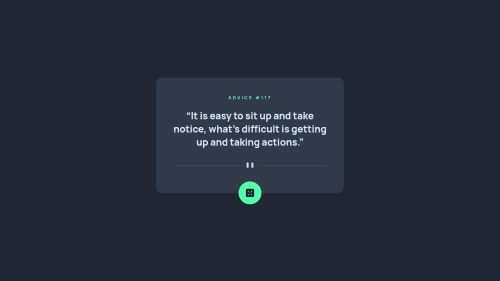Advice Generator App using React, SASS/SCSS, Axios and Advice Slip API

Solution retrospective
The bigest challenge here was to retrieve a new advice on each new click on the dice.
At first fetch or axios were not getting a new advice even though I was triggering a new request to the API url.
This was due to fetch and axios caching data.
To overcome this issue, the solution was to add a timestamp in the URL.
Overall I'm pretty happy of the outcome and it was also fun to great that glow effect when hovering the dice.
Hope you like this one!
I would be super grateful if you could follow me here or on Twitter @melwyncode
Thanks ❤️
Please log in to post a comment
Log in with GitHubCommunity feedback
No feedback yet. Be the first to give feedback on Melwyn's solution.
Join our Discord community
Join thousands of Frontend Mentor community members taking the challenges, sharing resources, helping each other, and chatting about all things front-end!
Join our Discord